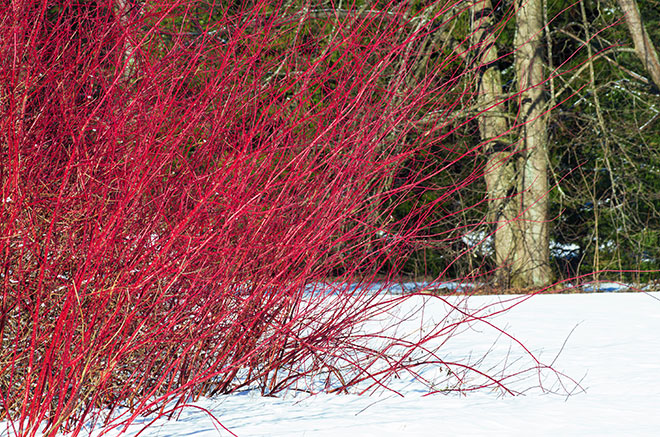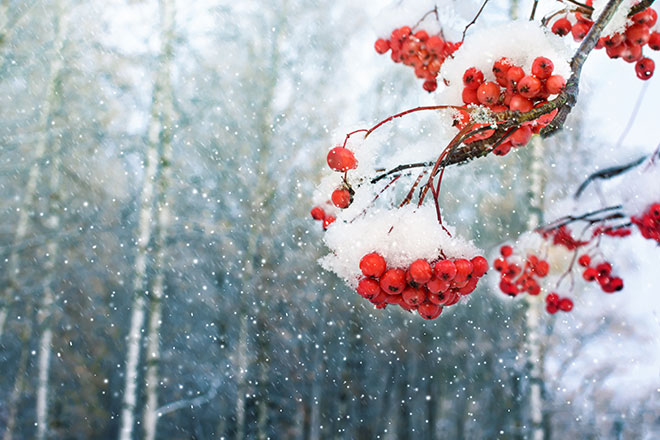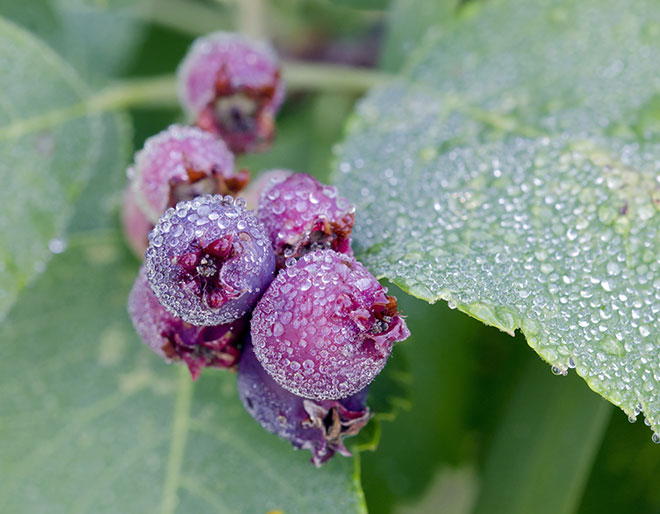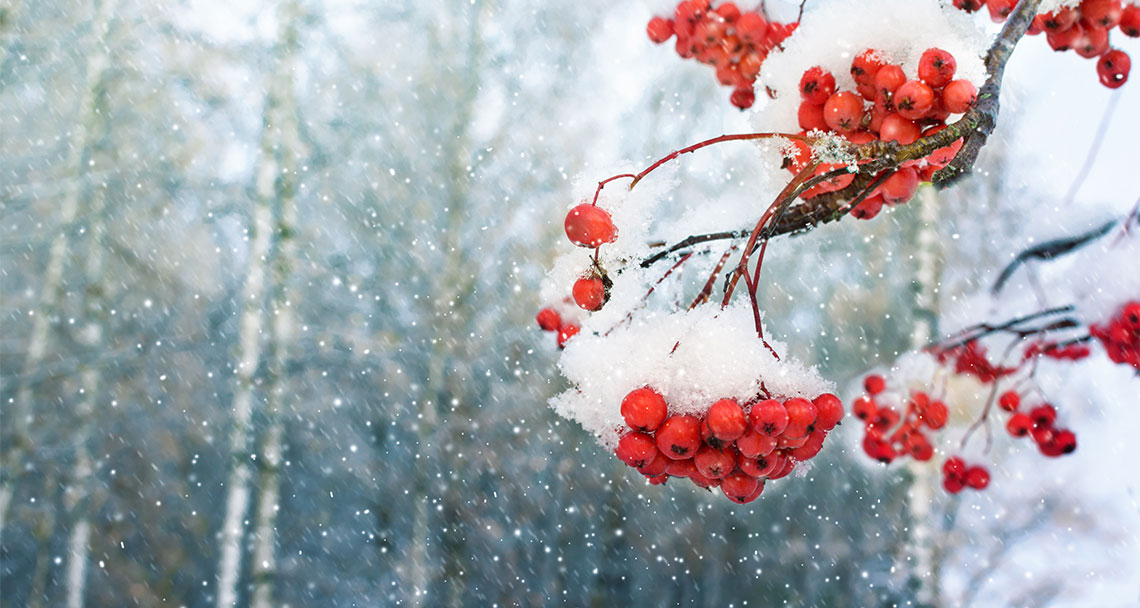Jacquelyn Cardinal shares knowledge from Elder Mike Beaver about some of the medicinal plants that surround us in our winter city.
As chillier winds begin to blow into our city, I know I’m just one of many Edmontonians who are starting to reach for more hand sanitizer, vitamin c, and the thermostat in an attempt to weather the cold and flu season without incident. It’s always a fascination of mine as a nehiyaw iskwew (or Cree woman) that my ancestors thrived here for thousands of years without the luxuries of central heating, antiseptic gel, and health food stores. Just how did they do it?
Mike Beaver, a nehiyaw elder that my brother and I seek knowledge from about traditional foods and medicines, sat down with us to give us teachings about a few of the medicines in our river valley that would have kept our ancestors healthy when the cold weather came. See if you can spot these winter medicines on your next winter jaunt!
Red Willow

Red Willow, or Cornus sericea are the dark red shrubs with small white flowers you might find in damper parts of our green spaces. Mike shared with us that the bark of these shrubs was traditionally dried and used as a tobacco of sorts, or could be made into a tea to speed along the recovery process of a cold. Like most other medicinal plants, many other parts of it were considered medicinal as well, such as the roots and berries. However, in the winter months when the ground is frozen solid and the berries have gone away, the bark is all that remains for gathering.
Mountain Ash

Mountain Ash, or Sorbus, is part of the rose family Rosaceae and is one of the most common trees in our city. You can spot them in residential neighbourhoods as ornamental trees as well as in nature sporting bright red berries. In a traditional setting, Mike shared with us that the bark of this tree was often gathered and brewed into a tea to help treat things from aches and pains to warding off sickness. In the warmer months, Mike tells us that, like the Red Willow, the other parts of the Mountain Ash, including its berries, also have immense medicinal value.
Saskatoon

The Saskatoon bush, or Amelanchier alnifolia, is a shrub that most Edmontonians would recognize by their dark purple berries. But did you know that the branches of these bushes also have medicinal properties? Mike shared with us that Indigenous peoples across the boreal region would gather the wood of a Saskatoon bush to steep in hot water for the steam and tea which would loosen coughs, relieve muscle spasms, and improve digestion.
Learning about these local medicines is a wonderful way to connect with the land and the history of our city, and Mike reminds us that if we do intend on gathering medicines to always ask for permission and give thanks. He assures us that this can be done simply by spreading the tobacco on the snow where you are taking the medicine, which shows respect for the plant and its healing properties.
Know any other medicinal plants that are found right in our river valley and would like to share? Add your comment below!
